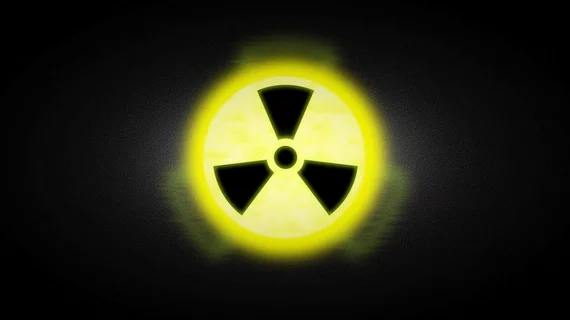Are orbit shields in CT perfusion worth the reduced radiation dose?
Though designed to reduce radiation exposure during CT perfusion, orbit shields can cause more harm than good to neuroradiology patients, Swiss researchers reported this week. The shields, meant to be preventive, could be rendering whole brain scans diagnostically useless.
Computed tomography perfusion has long been a staple for diagnosing patients with ischemia, differentiating brain tumors, predicting outcomes for traumatic brain injuries and helping to manage stroke patients’ health, corresponding author A. Hakim, MD, and colleagues wrote in Clinical Radiology. It’s fast, readily accessible and has improved with the adoption of adaptive 4D volume perfusion—but that might not be enough.
“CTP has a notable disadvantage, which is the high radiation dose,” Hakim, who works with the University Institute of Diagnostic and Interventional Neuroradiology at Bern University Hospital in Switzerland, wrote in the journal. “This has raised concerns about its effect on the eye lens, and several institutes use an orbit shield to reduce the radiation dose to the eye. However, when performing whole-brain perfusion, orbit shields could interfere with the x-rays required to obtain the images.”
Neuroradiologists often turn to orbit shields to avoid radiation-induced cataracts, as well, the authors said. The team analyzed 28 perfusion CT exams using orbit shields from 20 patients to discern whether the added radiation was worth a lower risk of eye damage.
Hakim and co-authors examined both source images and perfusion maps retrospectively, according to the research, and ultimately compared original images with ones processed using the iMAR—or iterative metal artifact reduction—algorithm, which aims to reduce artifacts in imaging.
All source images showed artifacts related to orbit shielding, the researchers reported, and 85.7 percent of those artifacts reached the posterior fossa, which was the farthest removed of three brain regions exposed to radiation. Nearly 93 percent of perfusion maps showed artifacts, as well, mostly as incorrect color codes, and 92.3 percent of those reached the posterior fossa.
“There was an obvious reduction in image quality when the orbit shield was included in the scan range, which can lead to diagnostic uncertainties and inaccuracies,” Hakim et al. wrote.
They said those points of confusion, most notably the incorrect color codes in perfusion maps, could lead to dangerous misinterpretations of a patient’s condition and put them on a less-than-ideal treatment path. Even iMAR, a technology designed specifically to reduce artefacts, failed to improve results.
“Application of the iMAR algorithm to the present patient sample did not result in any improvement of image quality,” the authors said. “In fact, a rather obvious degradation of image quality and an increase in the extent of artefacts in source images and colored perfusion maps was seen in all the scans evaluated.”
That means orbit shields also interfere with any coils, clips or other intracranial foreign bodies that might be present at the time of imaging, they wrote. Since shields also seemed to impede visualization of the posterior fossa, Hakim et al. advised avoiding using the technique in any patients with suspected lesions in that area or in the basal temporal lobes.
CT perfusion should always be performed “cautiously,” the authors said, and only if alternatives like MRI aren’t feasible. If CTP is the only option, it’s possible to reduce radiation by excluding the eye lens from the scan range, decreasing overall radiation dose or tilting the machine’s gantry.
“CTP delivers a high radiation dose to the eye lens, but the diagnostic value should outweigh the risk of radiation-induced cataract,” Hakim and colleagues said. “In light of these findings, decisions to use an orbit shield during CTP should be carefully considered for each individual patient.”

